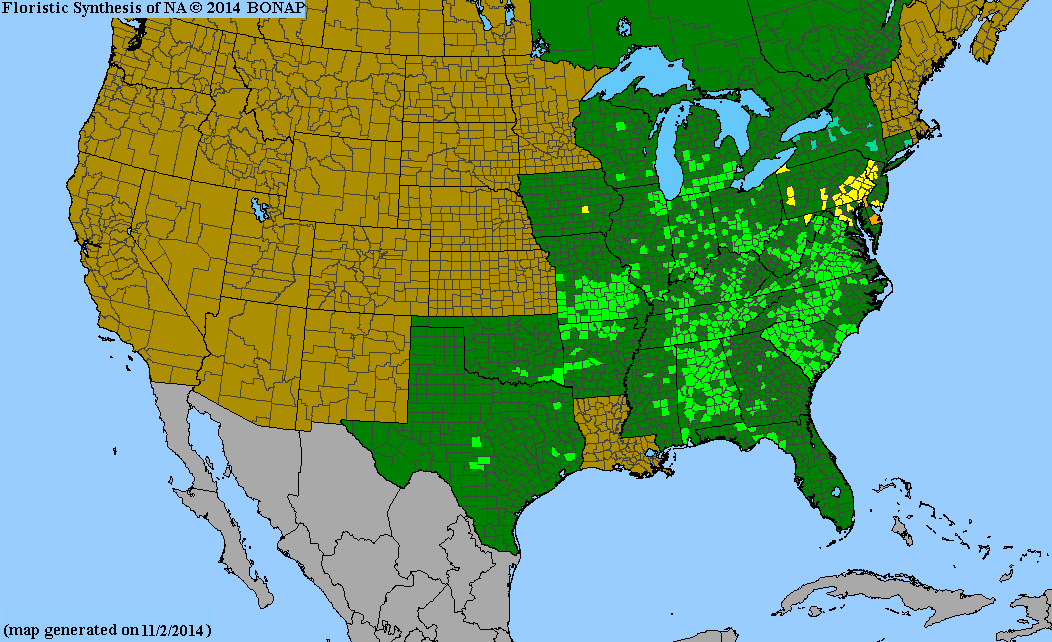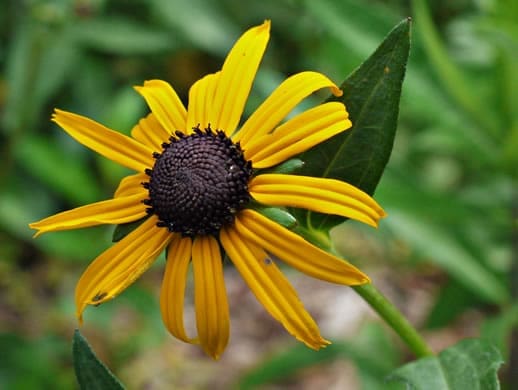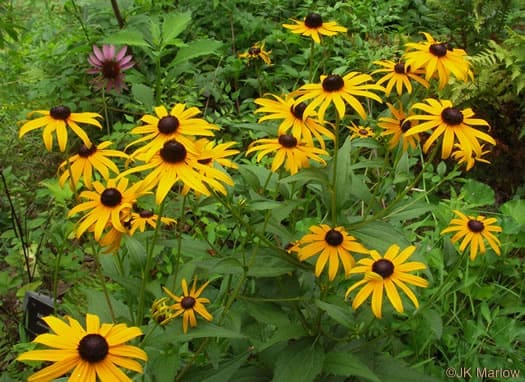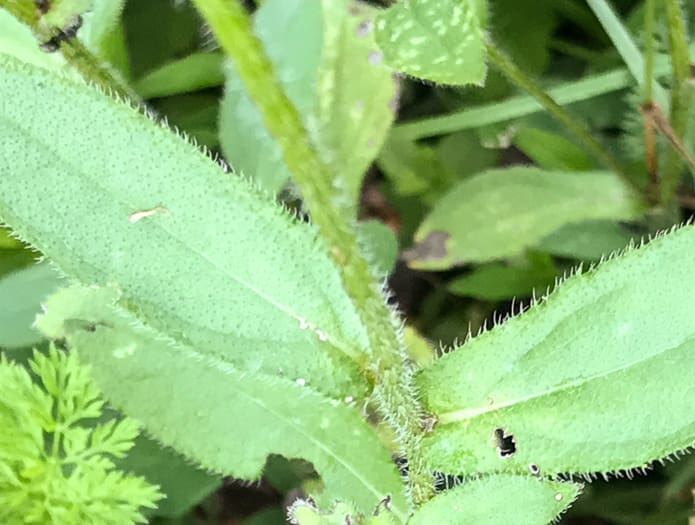Asteraceae
common eastern coneflower
Rudbeckia fulgida
Synonyms
Rudbeckia fulgida var. fulgida
Rudbeckia acuminata
Rudbeckia foliosa
Other Common Names
orange coneflower
Plant Type
Herbaceous Wildflower
Life Cycle
Perennial
Typical Size
2-3 ft. tall
1-2 ft. wide
Tolerant of
Deer, Drought
Inolerant of
Poorly Drained Soil
Propagation
By seed, By division
Plant Propagation Notes
Cold moist stratify seed for 90 days.
Plant Planting Notes
Spreads by underground rhizomes and forms large clumps.
Plants/Diseases
No significant disease or pest issues.
Wildlife Benefits
Nectar/pollen source for pollinating insects, Host plant for butterfly larvae, Fruit/seeds for birds
Leaves
Leaves alternate and rosulate, lanceolate to ovate with dentate margins; 3-6 inches long.
Flowers
Heads with 7-20 golden yellow rays and dark brown to black disc flowers.
Bark
Stems are branched with bristly hairs.
Toxicity
No known toxicity.

USDA Hardiness Zones
3, 4, 5, 6, 7, 8, 9
Light Exposure
Full Sun, Part Sun/Shade
Soil Moisture
Dry, Medium, Moist
Soil Drainage
Well-drained
Native in South Carolina?
Yes
Plant Native Habitat
Meadows, pastures, and old fields with dry to wet soils.
Global Conservation Status (NatureServe)
Secure (G5)
Federal Conservation Status (USFWS)
Not Listed
Distribution Notes
Rare throughout South Carolina.



